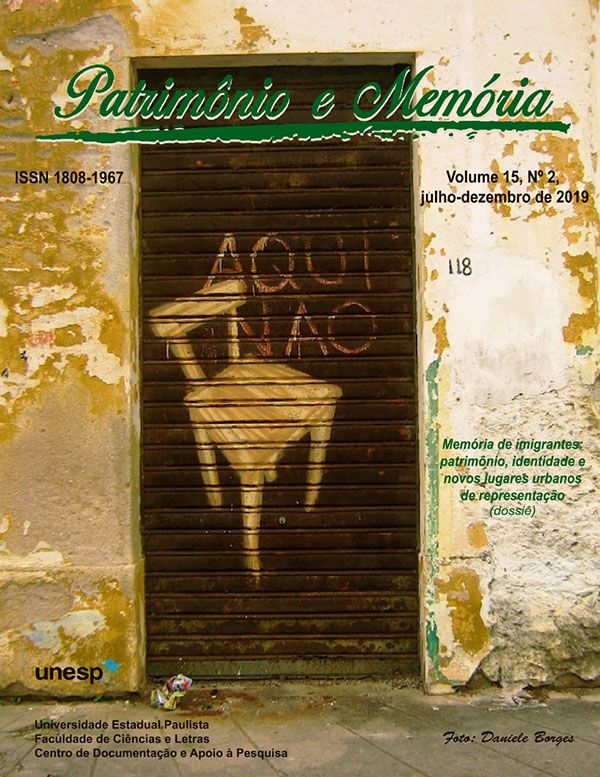Alejandro Vargas
el juglar creador de la Guasa Orinoquense
DOI:
https://doi.org/10.5016/pem.v15i2.3275Palavras-chave:
Migrante, Juglar, Identidad, Sincretismo culturalResumo
El presente artículo desarrolla una narración que permite pensar la identidad sonora de los pueblos como un proceso multiétnico y pluricultural, desarrollado a partir de acontecimientos históricos importantes que contribuyeron a una sinergia única y particular, gracias a períodos determinados de migración, muchas veces forzada y en otras oportunidades voluntarias, trayendo consigo saberes rítmicos, interpretativos y armónicos que se fusionaron con el correr del tiempo, generando una construcción cultural e identitaria sólida en Ciudad Bolívar, la cual se proyecta convertida en el género tradicional: Guasa Orinoquense. El propósito del presente estudio es identificar desde la producción musical del bolivarense e hijo de migrantes Alejandro Vargas, la herencia familiar afro llegada de otras latitudes, que junto al contexto cultural y socio-político del momento, generaron en el compositor un fenómeno sincrético cultural que marco pauta en la canción carnestolenda de la ciudad portuaria, convirtiéndose en referencia auditiva de toda la colectividad.
Referências
AMELIACH, J. La Guayana Esequiba: Algunos datos sobre su reclamación. 2011. Disponible en: <http://www.aporrea.org/actualidad/a132991.html>.
BERNAL, J. et alii. Dime cómo es Venezuela. España: Atlántico, 2002.
BRICEÑO, T. Comercio por los ríos Orinoco y Apure, segunda mitad del siglo XIX. Caracas: Tropykos, 1993.
DIETER, H. Venezuela, Tierra de indios: historia de nuestros indígenas, su origen, sus migraciones, sus herencias y sus imágenes. Caracas: W. F. Somers Editor, 2008.
INSTITUTO DE PATRIMONIO CULTURAL (IPC) DEL ESTADO BOLÍVAR. Cuaderno del patrimonio cultural. Caracas: La Galaxia, 2003. Serie Inventarios Bolívar I.
FARFÁN, I. Alejandro Vargas: juglar de Angostura. Ciudad Bolívar: Alcaldía de Heres, s/f.
FERNÁNDEZ, A. Ciudad Bolívar a grandes rasgos. 2016. Disponible en: .
GARCÍA, J. Caribeñidad: afroespiritualidad y afroepistemología. Caracas: El Perro y La Rana, 2006.
GURDIAN-FERNÁNDEZ, A. El paradigma cualitativo en la investigación socio-educativa. San José: Colección IDER, 2007.
MINGUET, V. Música y semántica: de la hermenéutica a la semiótica musical. Una panorámica abierta al s. XXI. ArtsEduca, Universidad de Valencia, n. 15, p. 48-69, 2016.
PERERA, M. El Orinoco domeñado: frontera y límite. Caracas: Universidad Central de Venezuela, 2006.
RAMÓN Y RIVERA, L. La música folklórica de Venezuela. Caracas: Monte Ávila, 1969.
RAMOS, J. La africanía en Venezuela: sclavizados, abolición y aportes culturales. Caracas: Banco Central de Venezuela, 2012.
SALAZAR, L. Historia de Paraguachoa. Caracas: Tropykos, 1991.
SATRUSTEGUI, J. A propósito del mecanismo de la memoria en las tradiciones populares. 1986. Disponible en: <http://www.vianayborgia.es/CUET-0048-0000-0213-0229m.html>.
VELÁSQUEZ, R. Estética aborigen. Caracas: Fundarte, 2008.
Downloads
Publicado
Como Citar
Edição
Seção
Licença
Copyright (c) 2019 Henry Vallejo Infante

Este trabalho está licenciado sob uma licença Creative Commons Attribution 4.0 International License.
Todo o conteúdo do periódico, exceto onde está identificado, está licenciado sob uma Licença Creative Commons do tipo atribuição BY.


